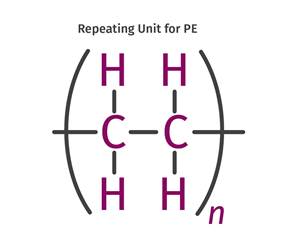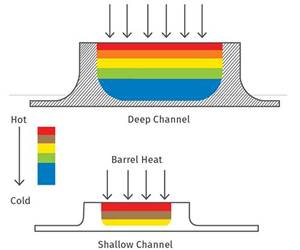INJECTION MOLDING: How Different Machine Types Handle Fill and Pack/Hold Times
The procedures are different between series and parallel machines. What type do you have? How can you tell? Here’s what you need to know.
Running an injection molding machine and documenting a process so that it can be run to produce the same parts on the same or a different machine can be a challenge. It is rather interesting that each molding shop has its own version of a setup sheet. You’d think in this day and age, with something so important, there would be some standards and consistency.
What should be in a setup sheet to document a process is too large a topic for one article, but there is one aspect that recently came up during a training session that needs attention: How different machines handle first- and second-stage injection. Depending on the brand of machine you are using you can put the same numbers into the controller and get different results. Let me elaborate.
Let’s say you want to run a job on two different presses, machine “A” and machine “B.” Please understand this has nothing to do with the quality of either machine. The focus here is on how their respective controllers handle first and second stage (fill and pack/hold). One is not better than the other, but there are operational differences.
In this example we will put into each controller the same numbers for injection time and hold or pack time. Both machines are set up with 9 sec for injection time and 7 sec of hold or pack time, also known as second stage. In both cases, with appropriate shot-size and velocity settings, the actual fill time is 3.60 sec. That is, both machines are set up to provide an identical fill time for our part—same size, and weight for first stage; no pack. Keeping fill time the same is critical for making identical parts, so no problem on the first stage. Also, let’s stipulate that the gate-seal time is 6 sec to make a good part. The question for this example is: Do we have the same process, particularly the same hold/pack time? The answer requires understanding how each of these machines sequence the first and second (pack/hold) stages.
Machine “A” is what I call a series or sequence-timing machine and Machine “B” is a parallel-timing machine. Both machines transfer from first stage (fill) to second stage (pack/hold) via position transfer/stroke cutoff. The parts at the end of the first stage for both machines are identical visually and in weight and size. It is the second stage that is different.
For machine “A” there is 7 sec of second-stage (pack/hold) time, and for machine “B” second-stage time is equal to 9-3.60 sec or 5.4 sec. Hence the “B” process has no gate seal and a different, smaller/ lighter part. Machine “B” actually has a different meaning for injection time. Machine “B” injection time is actually a total injection-forward timer. It is the total injection-forward time for first and second stage. You can put any number you want for total second-stage time, but you will get a hold time equal to the injection-time setting minus the fill time.
This is different than machine “A,” which handles the sequence differently. Once the screw reached the cutoff position at the fill time of 3.6 sec, the remaining time on the first-stage timer is not used; the machine sequences to the second-stage timer and uses it for timing the second stage. As you switch from type “A” to “B” you changed the plastic variables even though the machine setpoints were the same. So what type of machines do you have? How can you tell?
The best way to analyze a pressure vs. time (not position) graph or curve is to see how long the second stage stays on. Or you could find your machine in the table on p. 20. This is not something you can look up on the internet (at least not until this article is posted on PTonline.com). So I thought it might be useful to provide this information for the machines with which I am familiar. Let me know if I have any listed wrongly.
If you have a type “A” machine, a more proper setting for injection time in this case is about 3.75 sec—not the 9 sec used in the example above. If the machine does not reach position transfer or stroke cutoff by the correct fill time of 3.6 sec, something is wrong; maybe a gate is blocked and the first stage needs to be ended. Alternatively, if you brought this injection time over to a type “B” machine, you would have only 0.15 sec of hold no matter what the set hold-time number is. That would really foul up the process.
All of this may be old hat for seasoned processors, but for new folks—and even seasoned “C rustys” in the heat of production—this subtle difference can get lost as fires are fought from one machine to another. It is an easy mistake to make. In fact I would go as far to recommend that you equip your plant with all of one type or the other, if possible.
In short, use plastic variables or numbers and know your machine.
ABOUT THE AUTHOR
John Bozzelli is the founder of Injection Molding Solutions (Scientific Molding) in Midland, Mich., a provider of training and consulting services to injection molders, including LIMS, and other specialties. E-mail john@scientificmolding.com or visit scientificmolding.com.
Related Content
What You Need to Know About Leader Pins and Bushings
There’s a lot more to these humble but essential mold components than you might suspect. Following the author’s tips could save much time, money and frustration.
Read MoreThe Fundamentals of Polyethylene – Part 2: Density and Molecular Weight
PE properties can be adjusted either by changing the molecular weight or by altering the density. While this increases the possible combinations of properties, it also requires that the specification for the material be precise.
Read MoreThe Importance of Barrel Heat and Melt Temperature
Barrel temperature may impact melting in the case of very small extruders running very slowly. Otherwise, melting is mainly the result of shear heating of the polymer.
Read MoreInjection Molding: Focus on these Seven Areas to Set a Preventive Maintenance Schedule
Performing fundamental maintenance inspections frequently assures press longevity and process stability. Here’s a checklist to help you stay on top of seven key systems.
Read MoreRead Next
Making the Circular Economy a Reality
Driven by brand owner demands and new worldwide legislation, the entire supply chain is working toward the shift to circularity, with some evidence the circular economy has already begun.
Read MoreSee Recyclers Close the Loop on Trade Show Production Scrap at NPE2024
A collaboration between show organizer PLASTICS, recycler CPR and size reduction experts WEIMA and Conair recovered and recycled all production scrap at NPE2024.
Read More.jpg;width=70;height=70;mode=crop)











